The board at a glance
MSI relies on a rather tidy multi-layer board with a somewhat unconventional design, which was probably also developed from a thermal point of view.
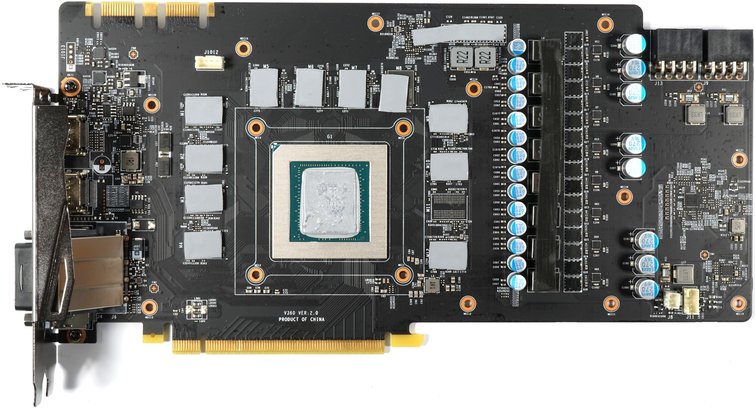
For example, the GPU uses a total of eight real phases, for which one relies on an NCP81274 from ON Semiconductor, which can also realize this. With the 53603, you use a special gate driver per phase, which controls the control circuits.
 |
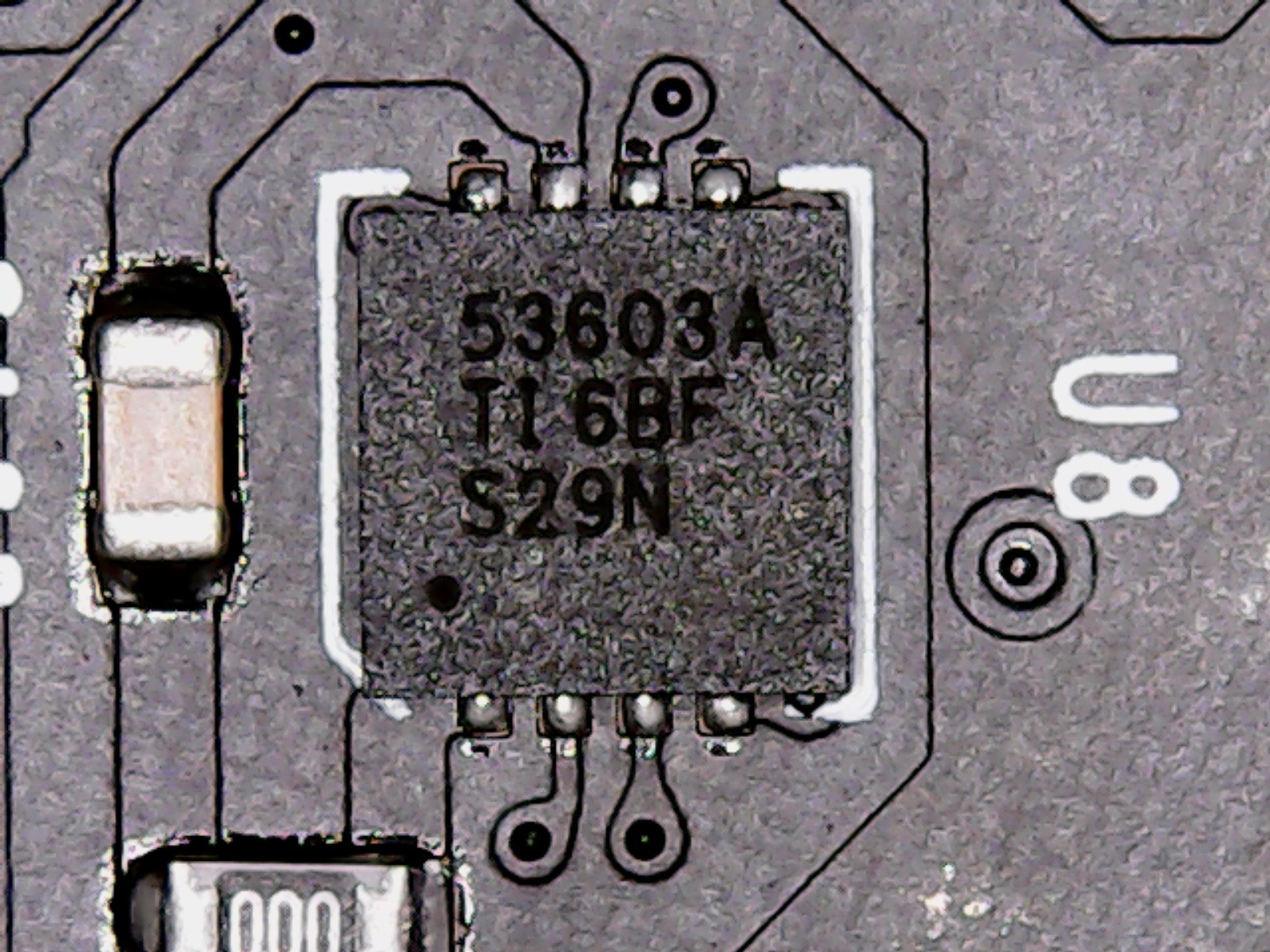 |
For these, MSI relies on a dual-N-channel MOSFET DG49BL from Fairchild per phase on the high and low sides, which also allows a nice spatial division of the hotspots under the heatsink due to the arrangement of the board. The VRM sits nicely next to each other like chickens on a pole.
The coils are firmly encapsulated ferrite core coils, which many manufacturers have labelled by the OEMs with their own lettering or imprint. In the present case, they are doing exactly what they are supposed to do. Polymer capacitors do the rest of the smoothing.
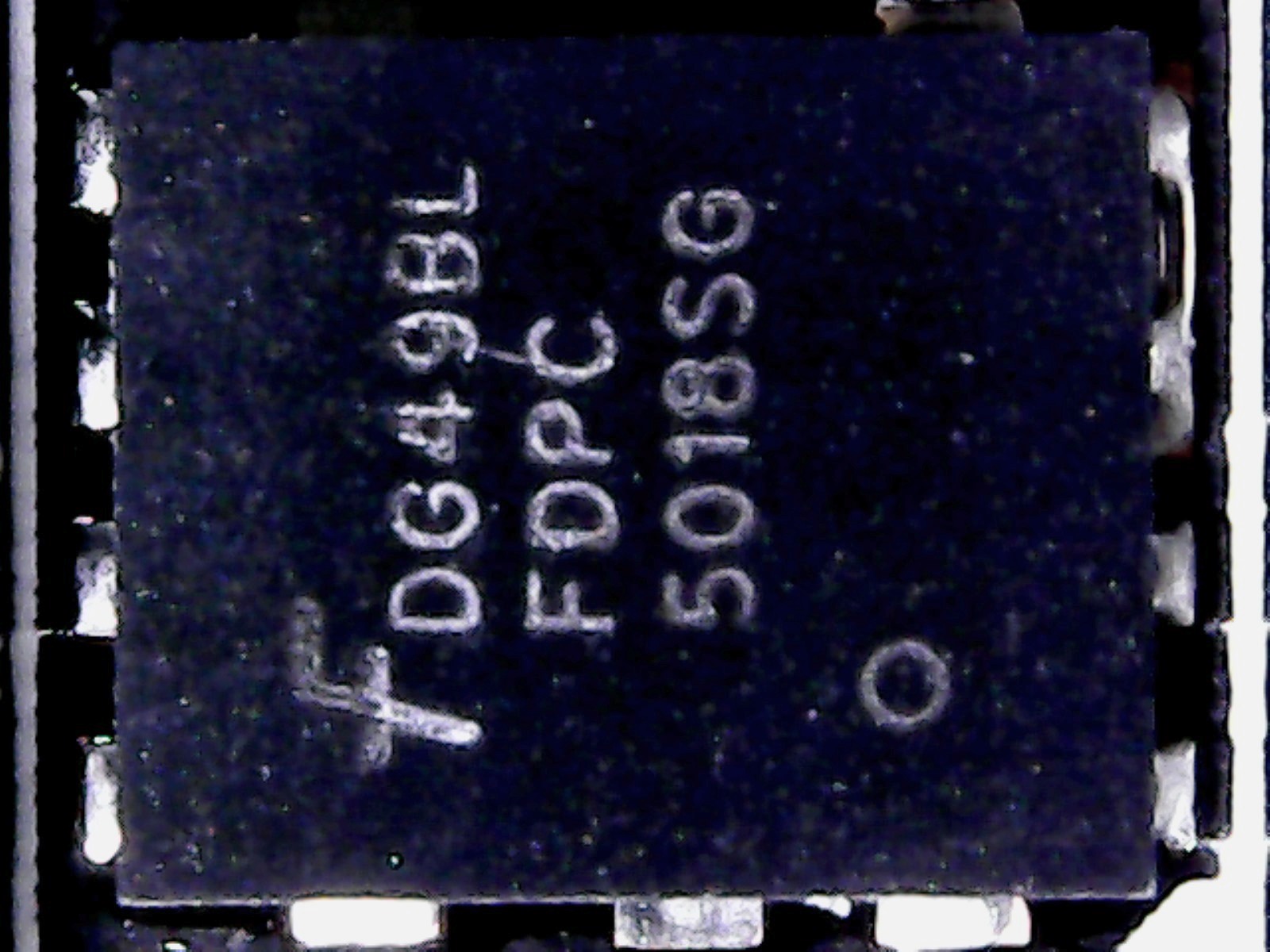 |
 |
A total of 11 of the new G5X-Micron modules of type MT58K256M321-Ja110, which offer up to 11 GByte/s and are therefore intended to compensate the missing 32 bits of the memory interface with a higher clock speed of 5500 MHz (effectively), are installed on this card.
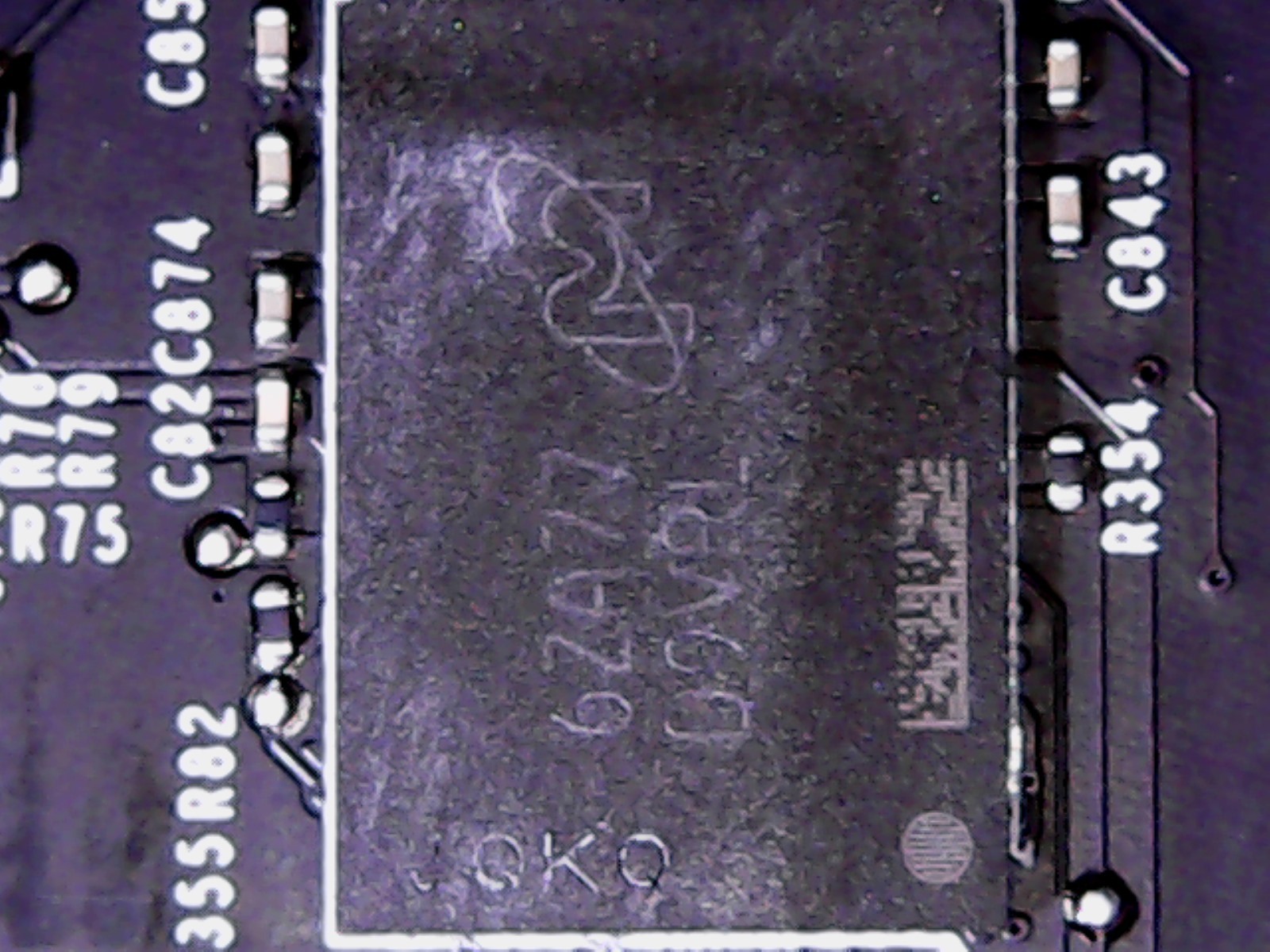
We are somewhat surprised that Nvidia didn't install the MT58K256M321-Ja120, which clocks a little higher. But one is probably afraid of a thermal problem of the storage tank operated with up to 1.35 volts, which in both cases may get hot up to a maximum of 95°C.
And since Nvidia always delivers GPU and memory in a bundle, MSI has little room for its own ideas.
The power supply of the memory is somewhat spatially separated and is released via an uP1658 from uPI Semiconductor, which can provide a total of two phases as a buck controller.
In contrast to GPU supply, MSI uses a dual N-channel MOSFET DG49BL from Fairchild per phase, which covers both high and low side in one wash-up. However, their cooling is not taken over with the specially developed VRM heatsink, which might take some revenge later.
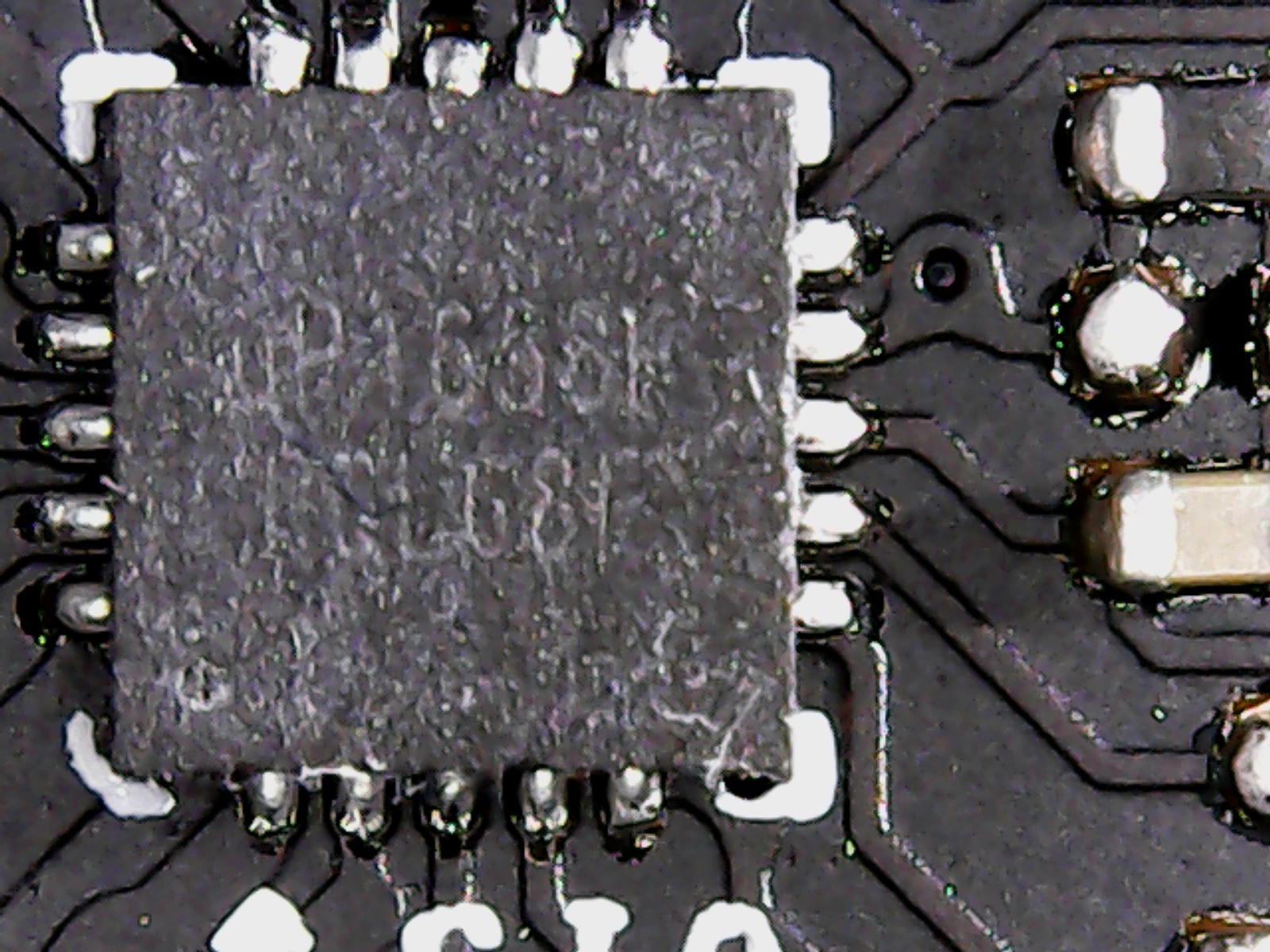 |
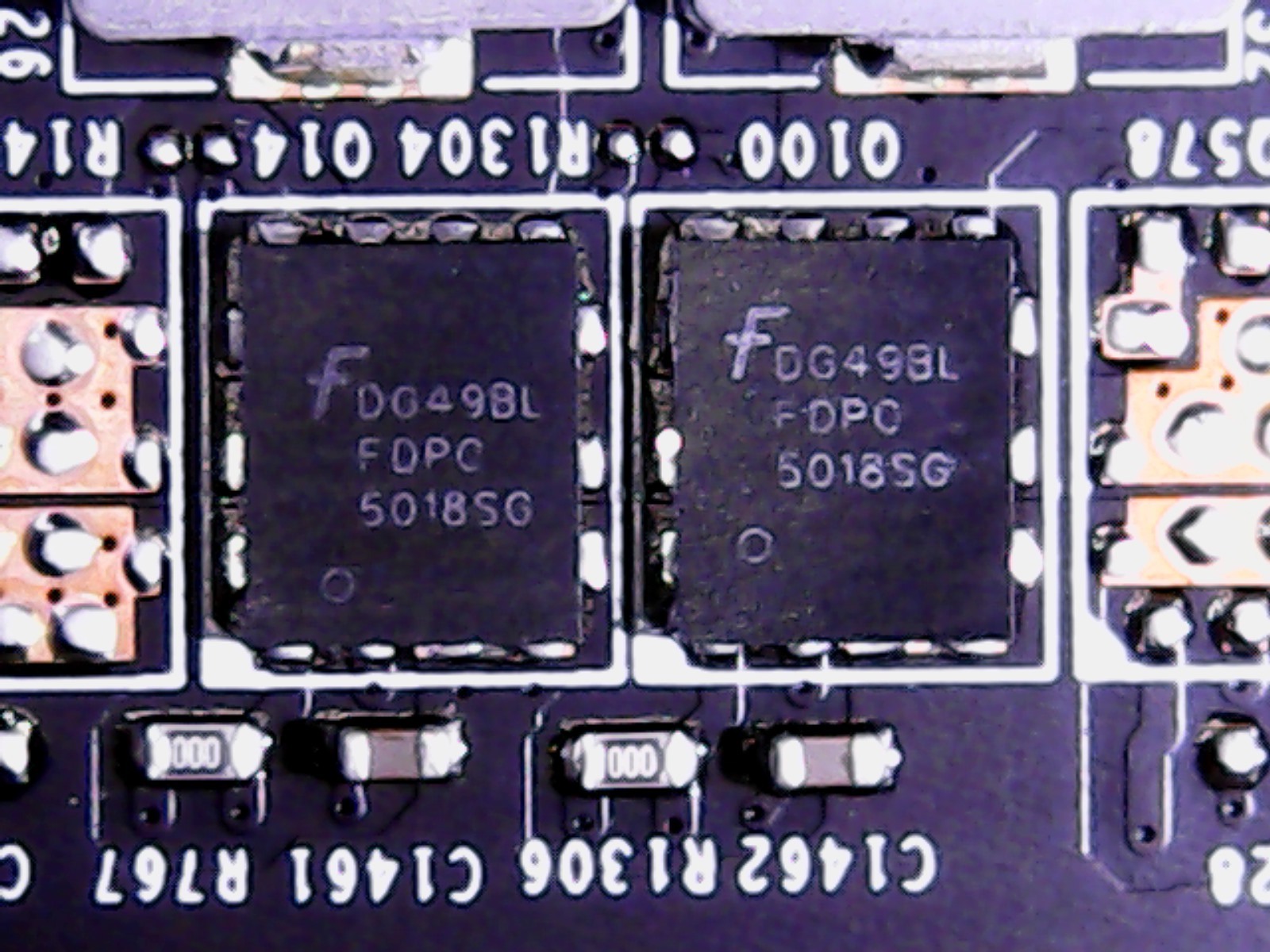 |
The flat, also encapsulated ferrite core coils of the storage power supply are normal. medium-priced mass-produced goods, e.g. Foxconn offers cheap lyre in this form and which can also be equipped automatically. The usual INA3221 is a monitoring chip for flowing currents and voltages and in the end also protects the technology from overloads.
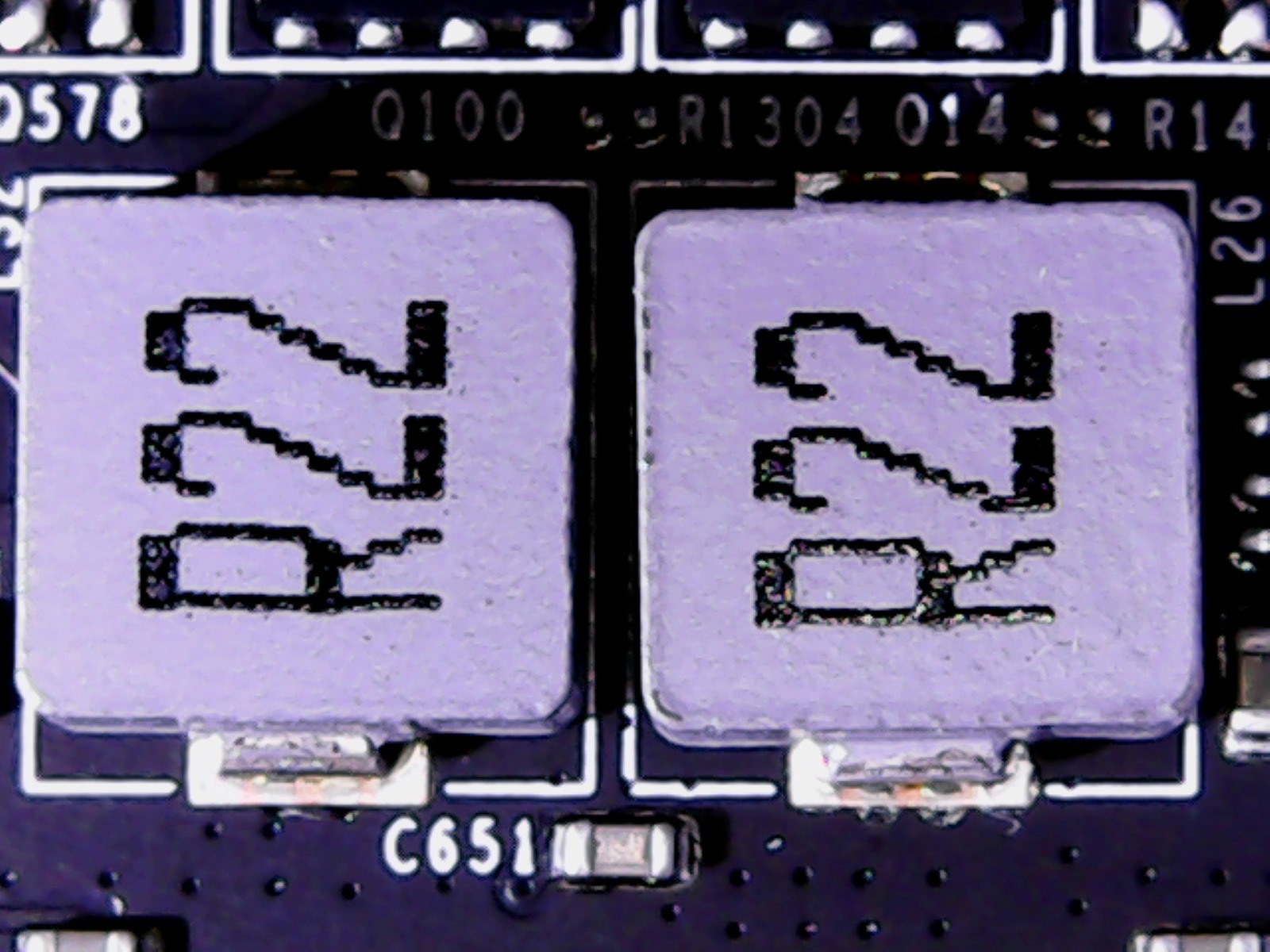 |
 |
Cooling concept and implementation
The backplate used is for the optics and stabilization of the radiator structure, but not for cooling, which we find a bit of a pity.
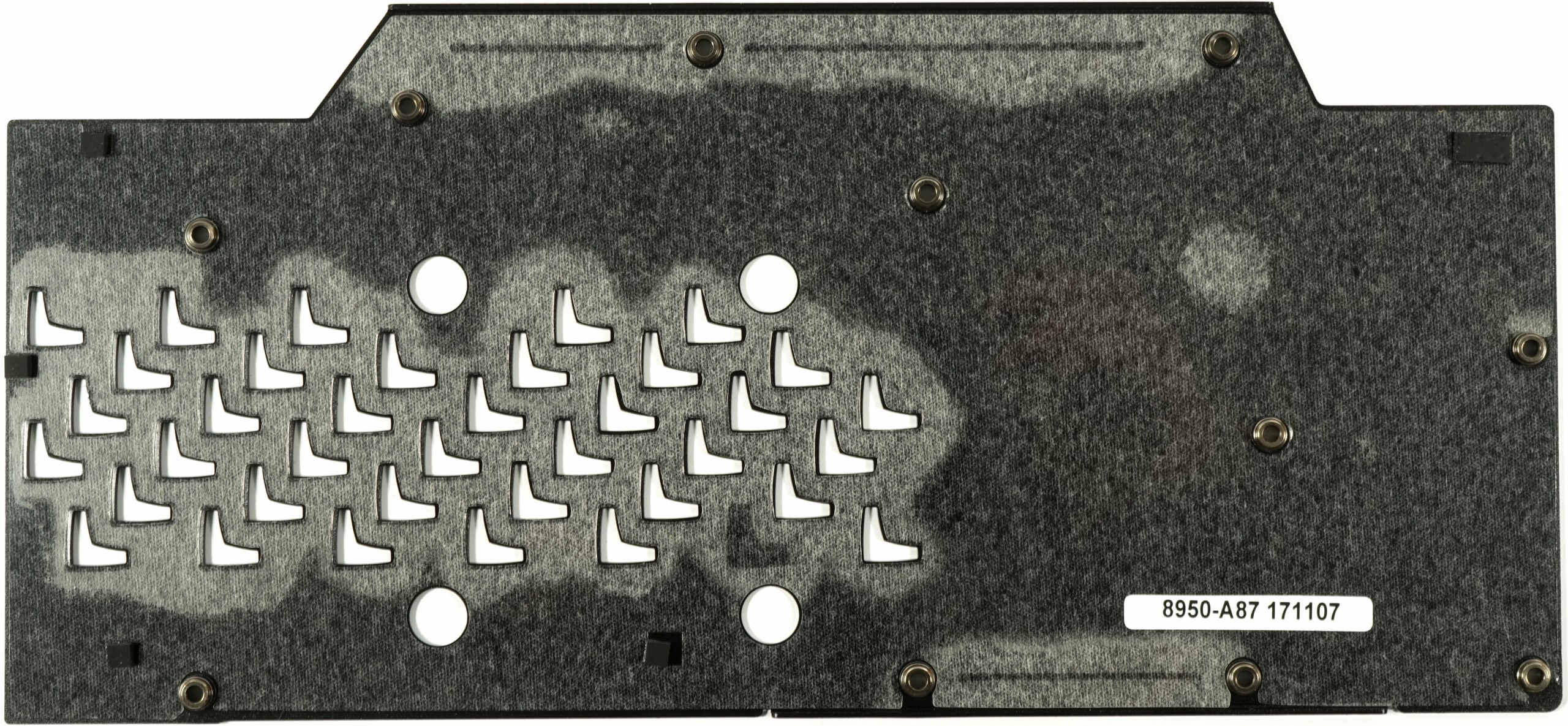
Since the VR could have tolerated cooling support on the back of the memory modules, we find the waiver a little too optimistic.
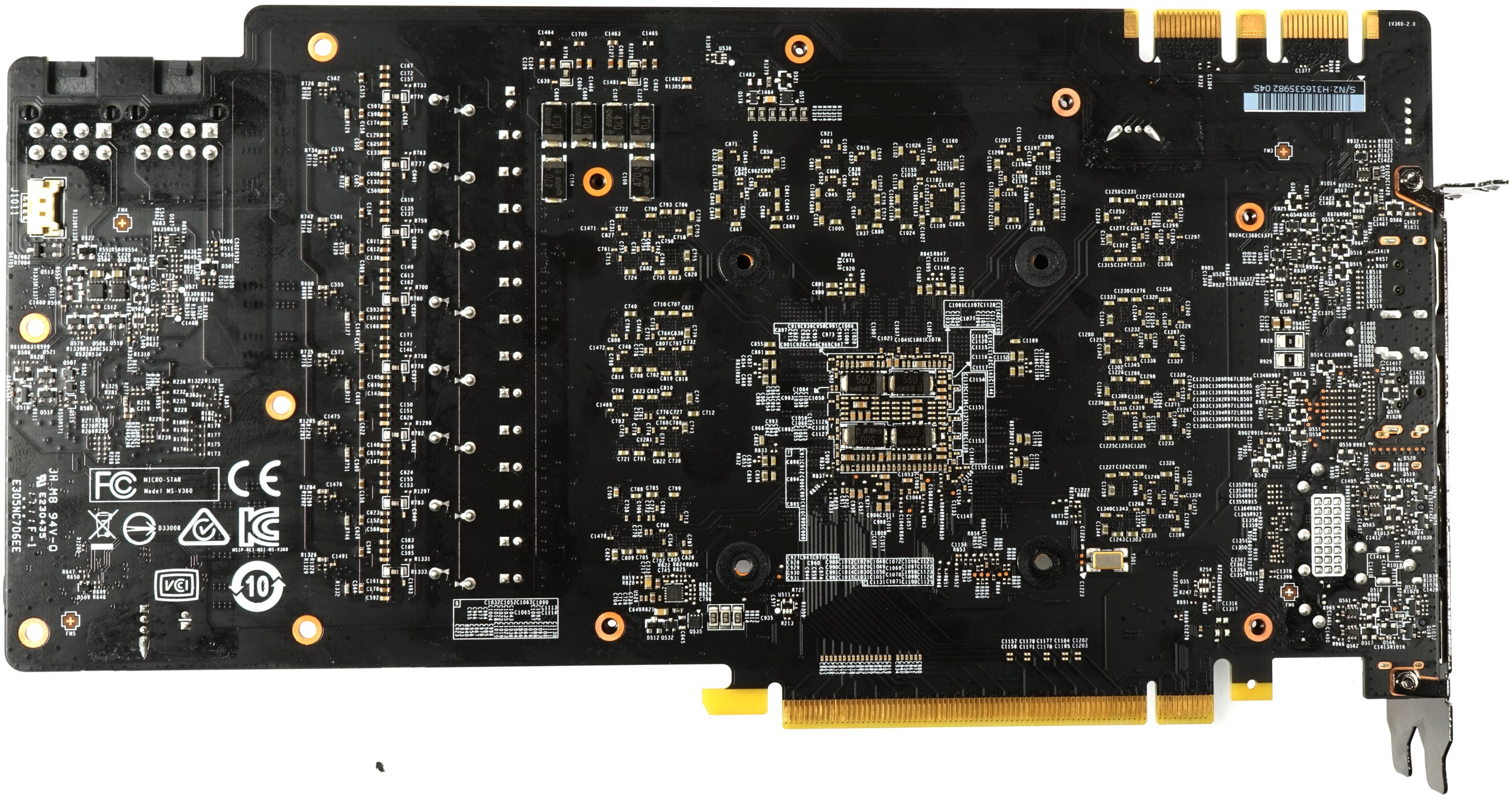
The reason is the former sandwich cooling plate of the MSI GTX 1080 Ti Gaming X, which has now shrunk slightly in length due to the real VRM heat sink and needs to cool the memory, as well as the VRM of the storage power supply. Those who weather danger here have at least a good snack for hot situations. But we will come back to that.
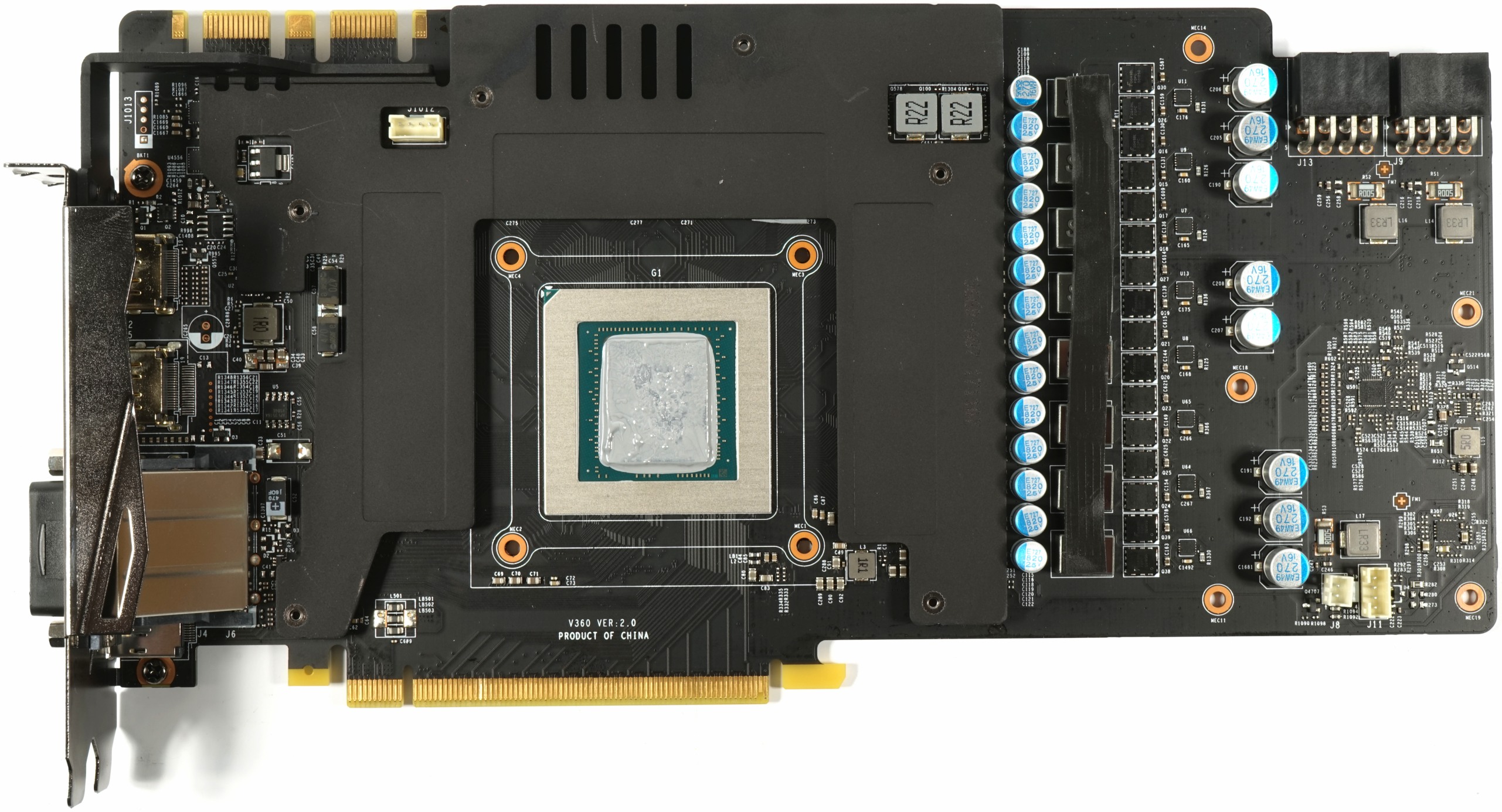
The cooler itself is a real block. It is divided into two parts, which is not a bad idea in terms of turbulence. The galvanized heat sink feeds a total of four 6 mm and a continuous 8 mm heatpipe made of nickel-plated composite material with the GPU waste heat. The VR heatsink cools the MOSFETS, as well as the gate drivers. However, a graduated solution that could additionally cool the coils has not been used.
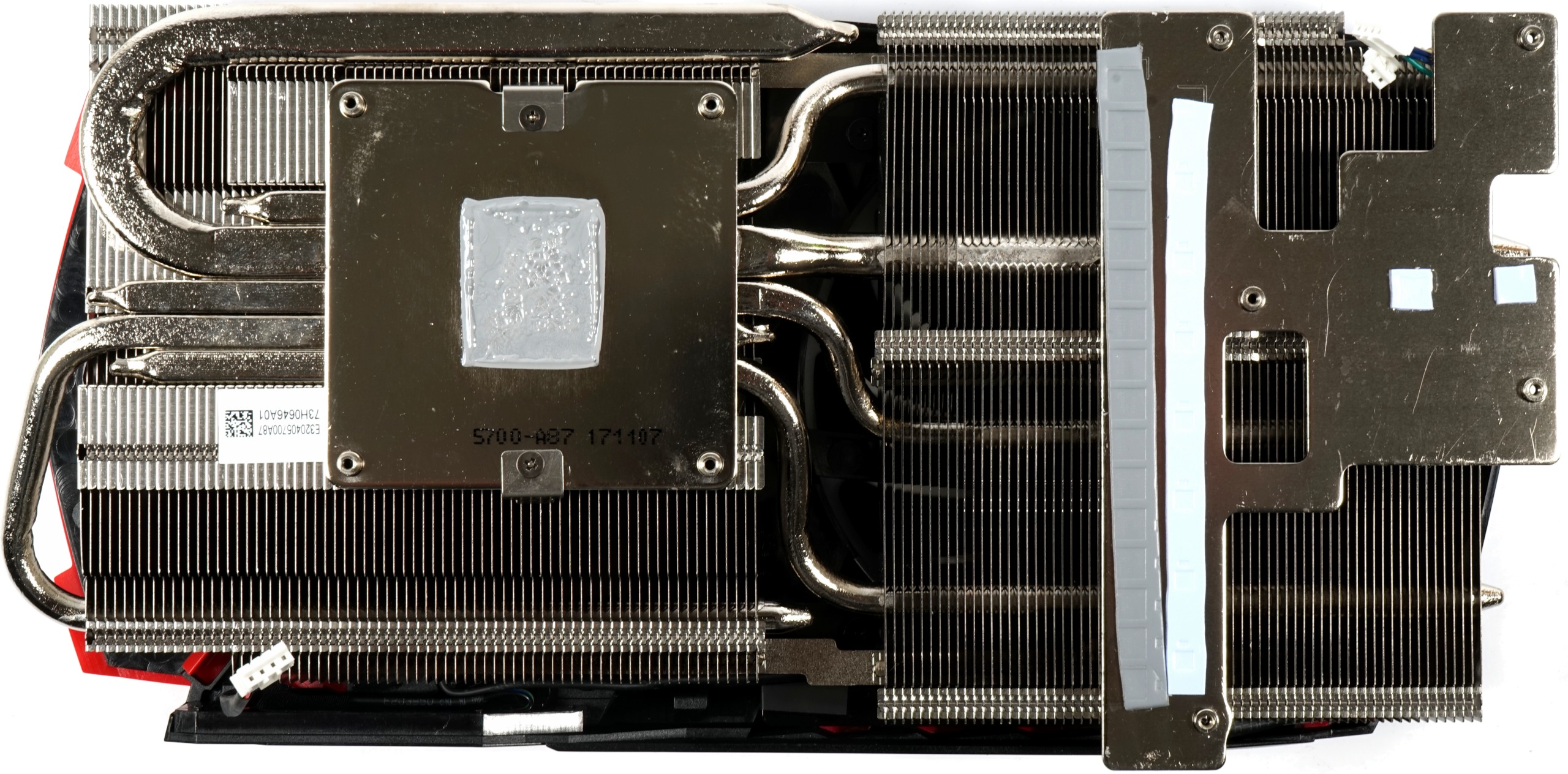
The two fans used, each with a rotor diameter of 95 mm, are designed for static pressure with their 14, quite steeply employed rotor blades per fan. In the past, it has often been impressively proven that this concept can work quite well.


































Kommentieren